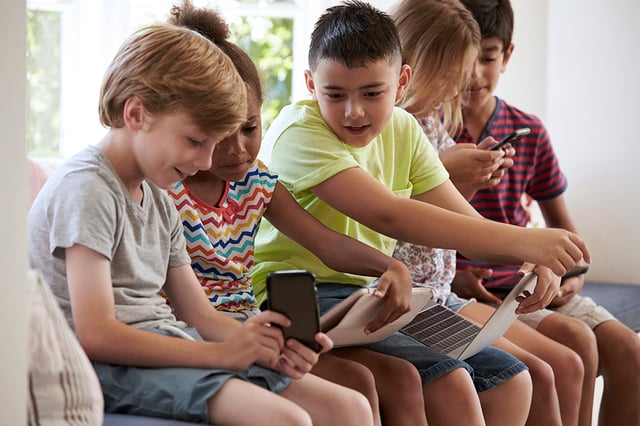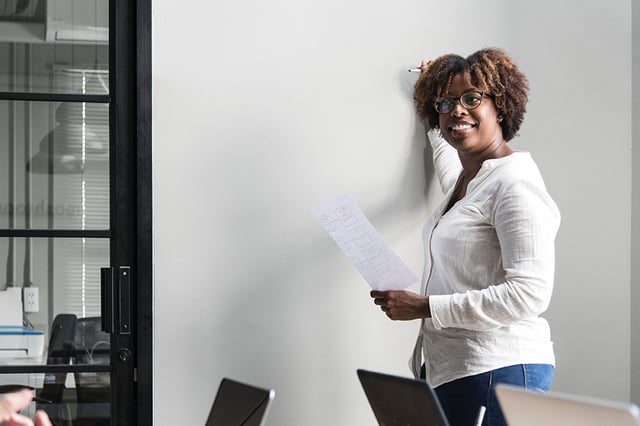How a District is Bringing Digital Wellness to Students (& how to join)
 Insights By Rich Boettner
Insights By Rich Boettner
Technology is undoubtedly a fixture in students’ lives. For them to use technology responsibly, safely, and effectively, they need to understand the impact of technology on their lives and to develop strategies for navigating the digital world.
Hilliard City Schools, a school district in Ohio, is helping students do this as part of their new (and now annual) Digital Wellness Month initiative, which connects students, parents, and teachers through conversations and learning opportunities centered on fostering positive digital experiences. To learn more about the program, I reached out to the district’s CTO, Rich Boettner.
Located in Columbus, Ohio, Hilliard City Schools is a growing suburban school district with over 16 thousand students, and Rich Boettner has served as CTO there for over 9 years.
Interestingly, he started his career as an elementary music teacher in 1991 and applied for a technology grant that year to get computers with musical keyboards for his students. This afforded the class the chance to create music and hear it played back to them, even when they couldn’t play an instrument at that age. This affirmed Boettner’s vision that technology should empower students to be creators, to innovate, and to shape their learning.
From this point, Boettner evolved into the role of a technology coach, and in 1999, he joined the technology team at Hilliard City Schools, eventually rising into the role as CTO.
Together, the district and technology team strive to embed technology throughout the student experience to develop their future-ready skills and nurture their academic growth, personal interests, and social and emotional learning.
The Digital Wellness Month is a facet of their commitment to enabling students to use technology as a positive and empowering force in their lives. Below features my conversation with Rich about this program.
How did the idea for a digital wellness program start?
RB: I was with my family at dinner in a restaurant several years ago. At one moment, I looked across the room, and I just had this epiphany because every single person in that room was looking at their phone. They're sitting with family members. They're sitting with children. They're sitting with friends. And everyone in that room was looking at their phone instead of like looking at the people around them.
What a world we have become that we are so tied to what's happening in other places. We're not always present with the people around us. And that was a kick-off for me that we need to do some things to teach kids how to make choices around those areas. ‘When is a good time to be on your device? When is not a good time?’
There are things we need to know about how using technology can help us or how it can hurt us. We must know where those lines are. And we must know how to how to manage those things to have a healthy digital life.
Why choose a single month?
RB: We decided as a team that the way to start making inroads with this was to have a Digital Wellness Month. Of course we want teachers and students to use these wellness strategies twelve months a year. But setting that month aside gave us an opportunity to have a very focused conversation around these. We picked four specific areas in our month in February, which is so nice because at 28 days it fits into four equal weeks.
- The first week of the month is digital wellness, how to be healthy and well while using technology.
- The second week is digital citizenship, how to interact with other people – as a group and in society – in a moral, legal, and responsible way.
- The third week is online etiquette, how to talk with people and have a presence online that represents ourselves.
- The fourth week is online safety, how to stay safe on the Internet and how to protect personal data.
What does the learning experience entail for students (and adults)?
RB: We knew that our adults are just as vulnerable as our kids are in a lot of these ways because so much of this technology is new. What we decided as a team was to develop lessons both for school and for home.
The technology teachers and coaches worked together to build a classroom lesson and a home lesson around the same topic. Let's say they wanted to teach how to avoid phishing scams. There were classroom lessons where the teacher could teach about that topic, but there was also an at-home activity that dovetailed. It wasn't the same lesson, but it was something parents could do with their kids. We would send those lessons out at the beginning of the week both to the teachers and parents.
These are sometimes hard topics for parents to bring up. How do I talk about my footprint? How do I talk about when I post things online or when my child posts things online that the posts become part of who we are in the world? With parents, we said, ‘Hey we would encourage you after dinner some night this week. Here's a lesson you could do with your family.’
We gave parents some videos or some pictures to show to the kids, and then they had questions that they could sit at the table and discuss. We gave parents ideas and training, and we also gave them icebreakers to get conversation going at home. One of the very first lessons that we gave to parents was about when you can use your device at home, when you can’t, and how much time is the right amount of time on devices. It was, ‘let's talk about this as a family, and let's set our ground rules of what we think is valid in our family.’”
What is Hilliard’s plan for next year?
RB: We want this to be a recurring event, and we want it to be bigger than just Hilliard. Every kid needs this information, and every kid needs to get this training on how to live a healthy life in the digital world. So, we are working to expand, and we have about 50 school districts across the United States who have committed to teaching Digital Wellness next year in February.
We are calling any district who wants to participate in this next February to join us. (Register here!)
A group of 20 districts and WOSU Classroom (a division of WOSU Public Media) are now working together to develop more lessons because there are other areas and other topics we need to address that we haven't covered yet. We're trying to build some more content, and then we're going to share that openly with any district that signs up to be a part of Digital Wellness Month next February.
Final thoughts…
Digital wellness will be a defining measure of students’ experiences as technology users, both now and in the future. As the Digital Wellness Month advocates:
- Students must maintain balance between digital and face-to-face interactions.
- Students must exercise responsibility and honesty
- Students must be positive with others in digital environments.
- Students must develop strategies to stay safe and protect personal information online.
Digital wellness brings these vital skills to students, parents, and teachers to change how kids and adults navigate the digital world and shape the future of technology and our relationship with it.
To end, how can we empower students to be safe and adept technology users? Plus, how can we work toward this in active partnership?







